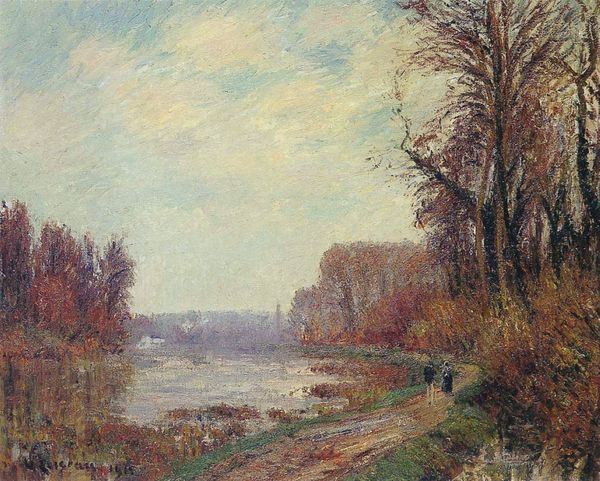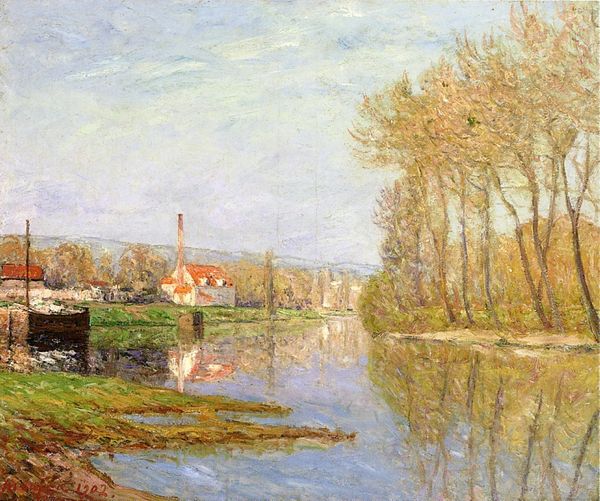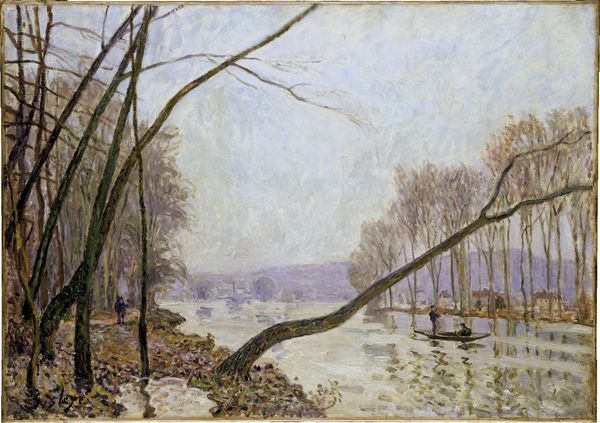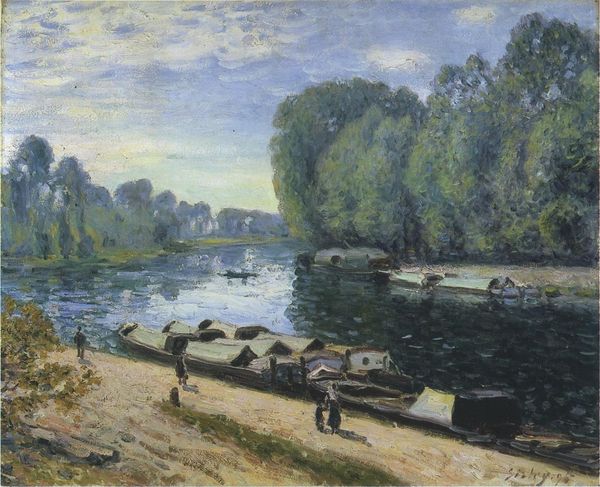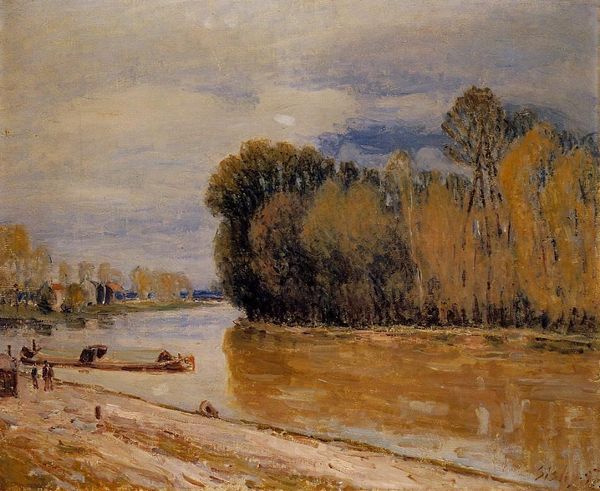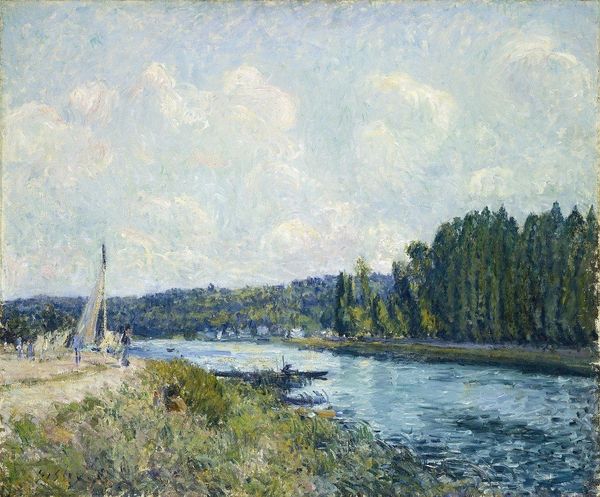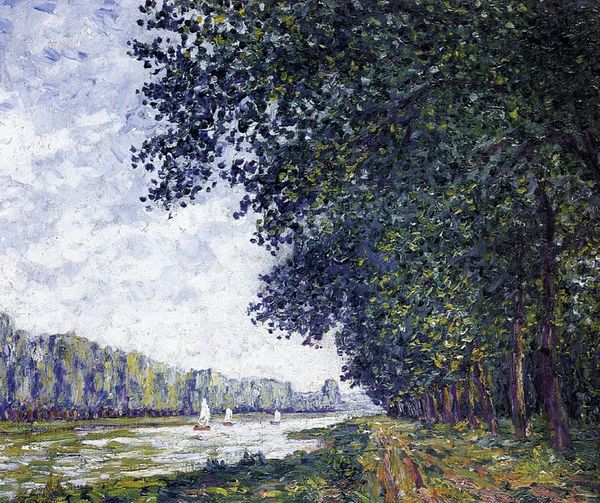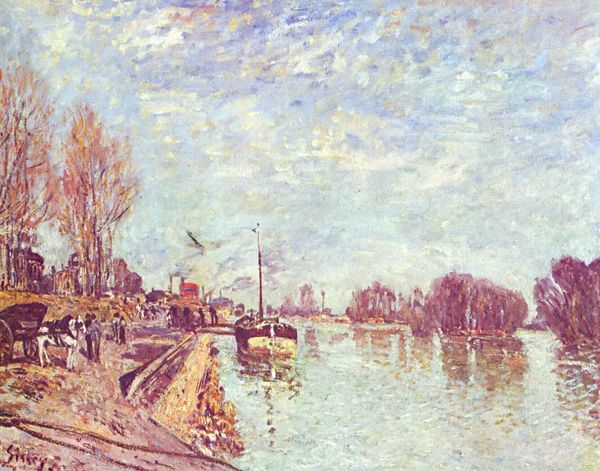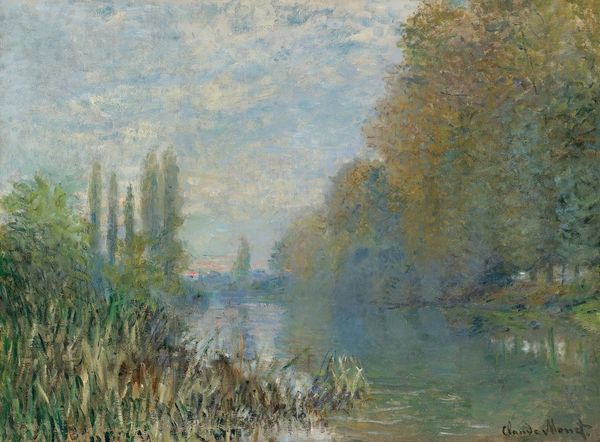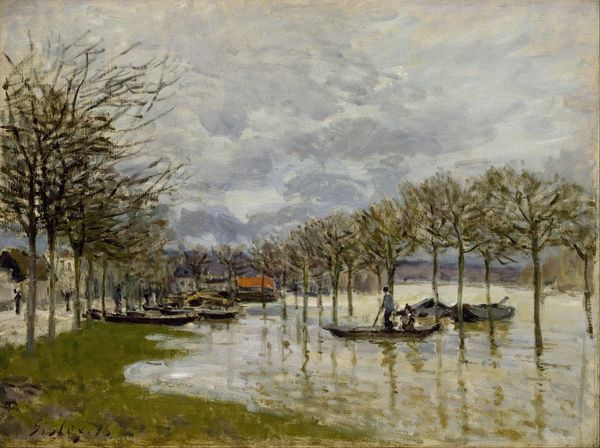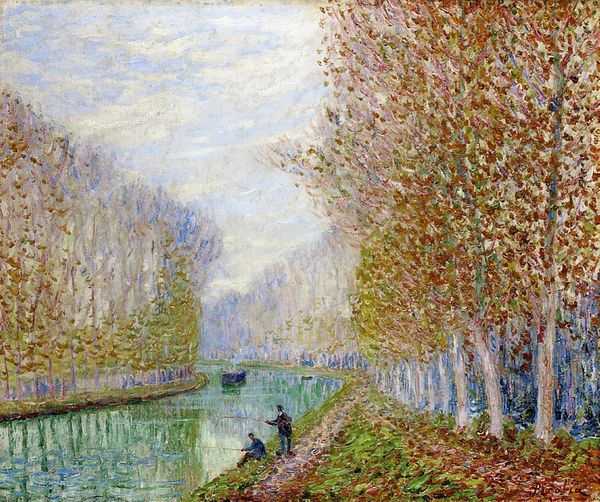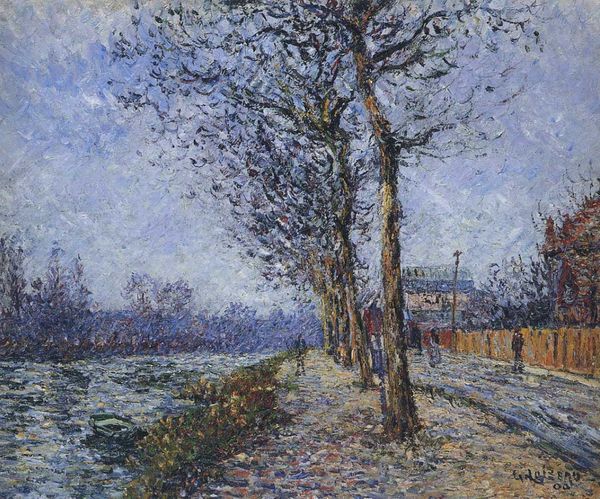
Copyright: Public Domain: Artvee
Curator: What a gray day. Something about the tonality in this piece just makes you want to pull your coat a bit tighter around yourself. Editor: We’re standing in front of "The Loire," an oil painting created in 1896 by Alfred Sisley. It’s an excellent example of his late impressionist style. I’m interested in the physical materiality of this painting. Sisley’s brushwork is really prominent, look how he builds up the landscape, those choppy strokes of color creating depth, and how they emphasize the surface as well. Curator: And of course, this was painted en plein air. He would have had to capture that fleeting light and the scene before him quickly, leading to this seemingly effortless application. Though he had a reputation as a devoted plein air painter, Sisley struggled to achieve commercial success in his lifetime, a stark reality for many landscape painters of the era. Editor: Success was indeed unevenly distributed, even with impressionists! Think about the cost of materials in his context: canvas, paints, brushes. Where did he source them? How much time was needed? What relationships might he have had with those material suppliers, even locally? Curator: And consider the rise of Impressionism in contrast to the established Salon system. This style directly challenged academic standards for how painting was conceived, made, shown and sold—as this move allowed the proliferation of privately owned galleries and sales outside of established art circles. The figures walking by the riverside seem dwarfed by the environment. Editor: Precisely! See the subtle social commentary embedded in these kinds of landscapes, too. His choice of ordinary places suggests an attention to everyday life, which then gets elevated, or valorized by painting. This reflects evolving societal values towards the environment and leisure. He makes visible a middle-class idea of the landscape for the weekend or day-trip. Curator: I agree. Sisley is inviting us to reflect on the role of the Seine in shaping French identity and how his work helped shift ideas about the aesthetic and social values attached to these settings. Editor: Looking at how the visible labor of the painting parallels Sisley's actual labor to produce this image makes me think about how artworks come into being in particular material conditions. Thank you for illuminating its context so thoroughly! Curator: My pleasure! I'm going to go warm myself with a coffee now. Care to join?
Comments
No comments
Be the first to comment and join the conversation on the ultimate creative platform.
